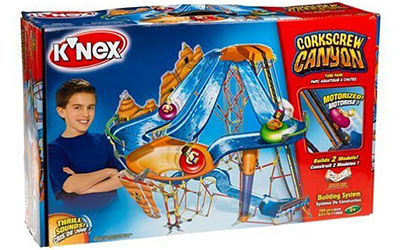Knex Corkscrew Canyon
K'nex slide park building construction playset with electronic sounds
 Build a gigantic toy tube park that is three and a half feet tall. Three awesome slides for fun-seeking tubers to go down, including a dramatic spiral into a funnel shaped slide. A plummeting drop with a jump at the bottom. Toy lift carries tubers to the top and selects a slide for them to go down.
Build a gigantic toy tube park that is three and a half feet tall. Three awesome slides for fun-seeking tubers to go down, including a dramatic spiral into a funnel shaped slide. A plummeting drop with a jump at the bottom. Toy lift carries tubers to the top and selects a slide for them to go down.
Canyons are formed primarily through the erosive activity of rivers, although wind, ice, and other geological processes can also play a role. Over millions of years, rivers cut through layers of rock, carving out deep valleys with steep cliffs. The process begins with a slight gradient or slope in the terrain, causing water to flow downhill. As the river flows, it picks up sediment, rocks, and other materials, which act like natural abrasives, wearing away the rock bed over time.
Differential erosion often occurs when the river encounters layers of rock with varying hardness. Softer rocks erode more quickly than harder rocks, causing an uneven riverbed that deepens the canyon's formation. In arid regions, flash floods can contribute significantly to the erosion process. Over geologic time scales, the continuous cutting action of the river coupled with the erosive power of other elements like wind and ice results in the formation of a canyon.
Plate tectonics can also contribute to canyon formation. In cases where the Earth's crust is uplifting due to tectonic forces, a river can incise rapidly into the uplifting plateau, carving a canyon as it goes. This interaction between erosional and tectonic processes can lead to some of the world's most spectacular canyons, like the Grand Canyon in the United States.
